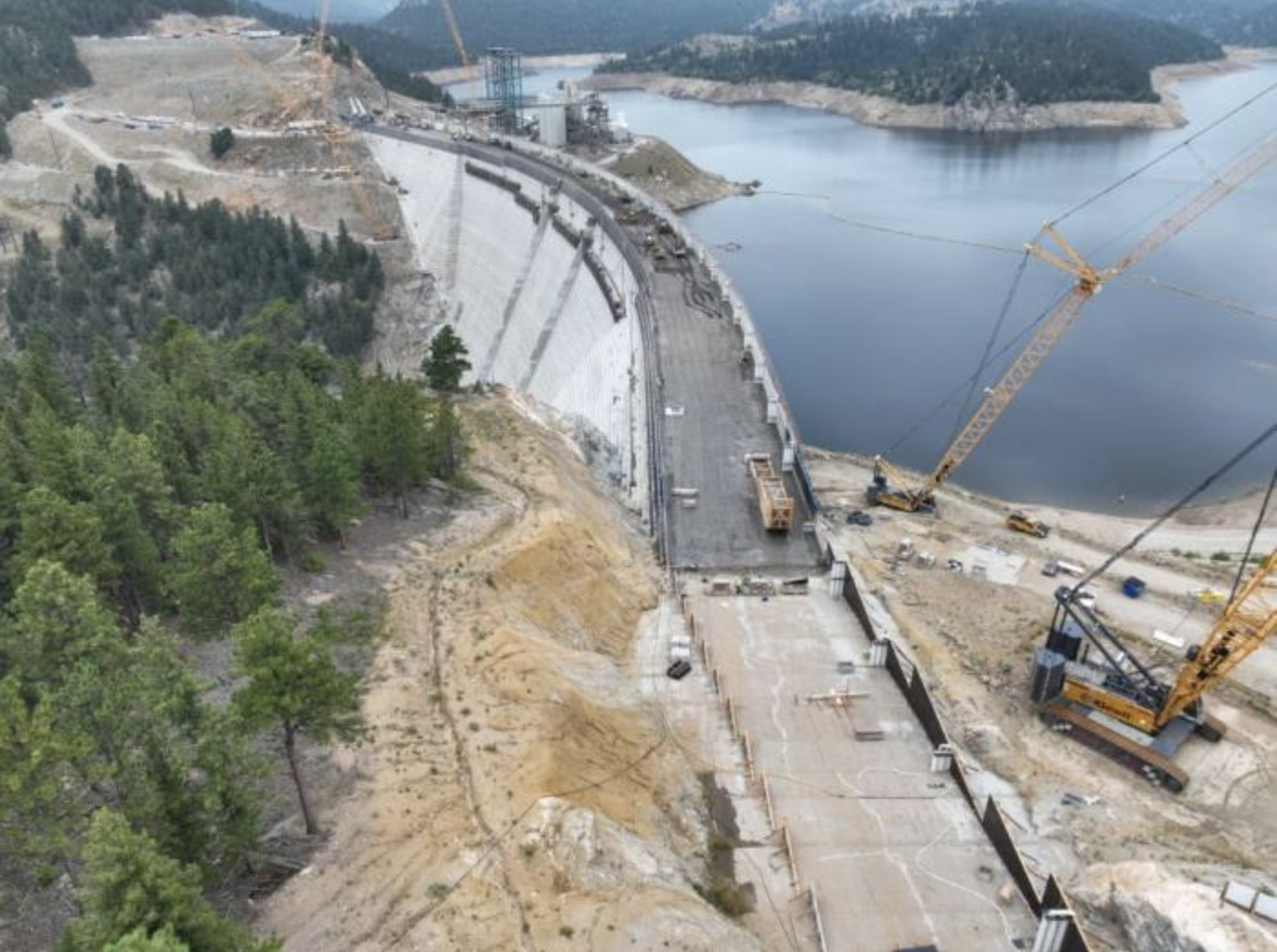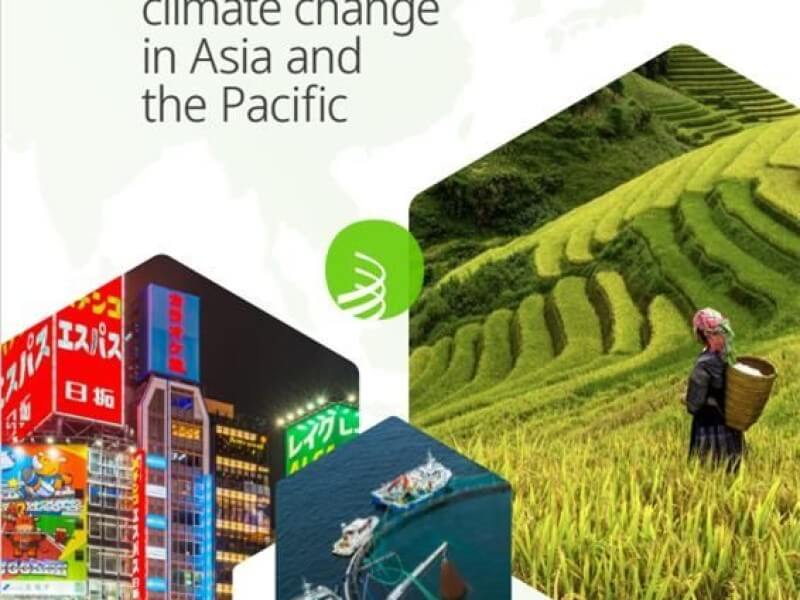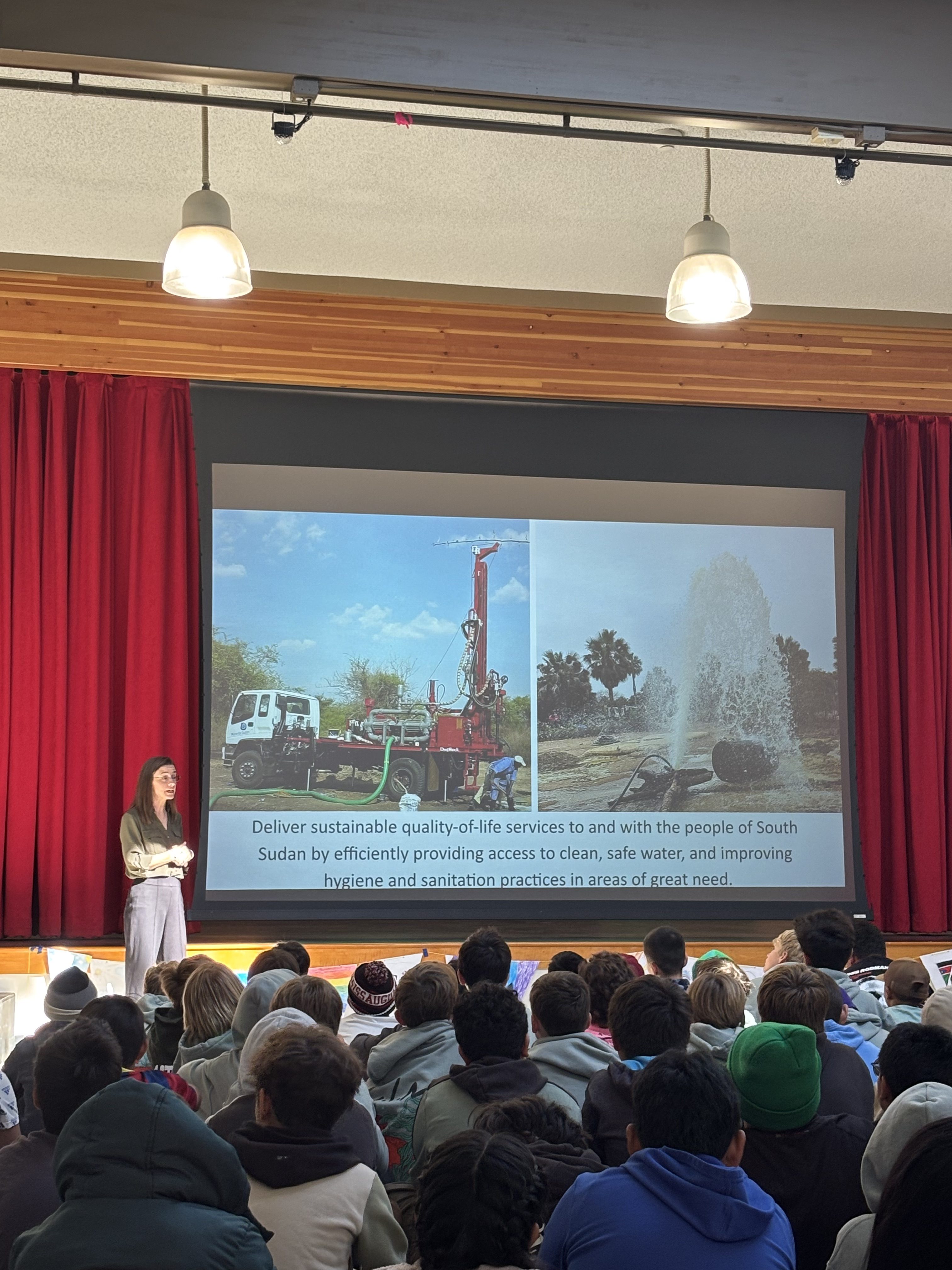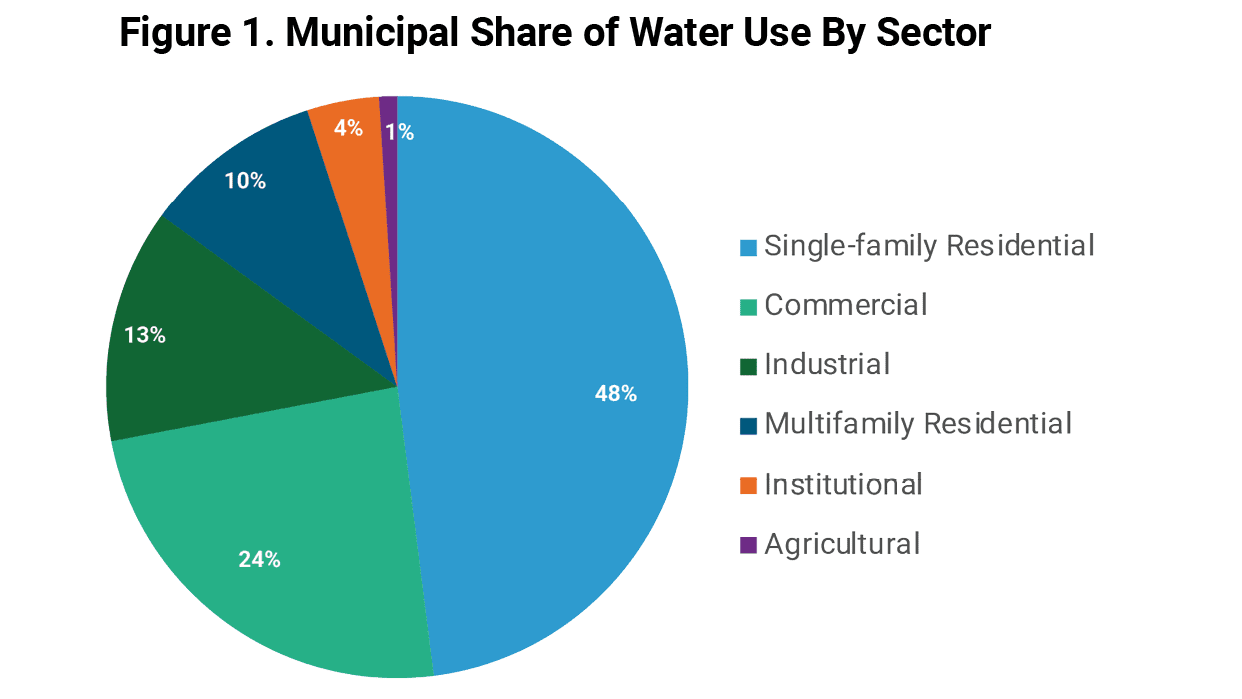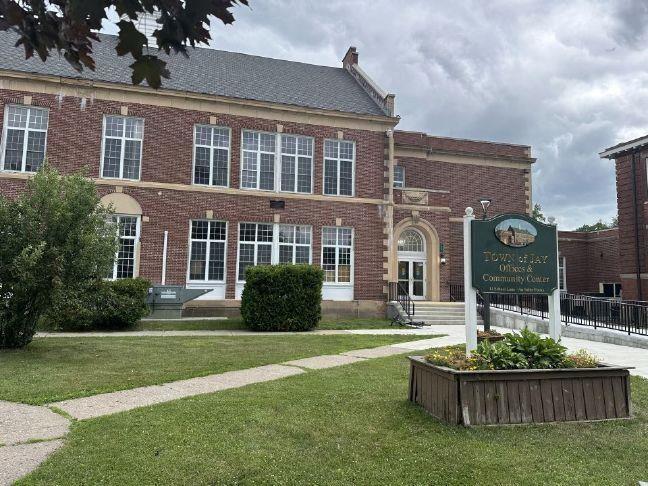Report on the Gross Reservoir Expansion Project and Sustainable Development Goals
Executive Summary
A U.S. Court of Appeals has ordered mandatory mediation between Denver Water and the environmental group Save the Colorado concerning the $531 million Gross Reservoir expansion project. This report analyzes the conflict through the lens of the United Nations Sustainable Development Goals (SDGs), highlighting the tension between urban water security (SDG 6, SDG 11) and environmental protection (SDG 13, SDG 15). The court-mandated mediation represents a critical step toward achieving a resolution through strong institutions and partnerships (SDG 16, SDG 17).
Project Objectives and Alignment with SDG 6 & SDG 11
The Gross Reservoir expansion is a significant infrastructure project with direct implications for several Sustainable Development Goals, primarily focusing on water security and urban resilience.
- SDG 6 (Clean Water and Sanitation): Denver Water asserts the project is essential for ensuring a reliable and sustainable water supply for 1 million metropolitan customers. By increasing storage capacity, the utility aims to improve water resource management and resilience against shortages, addressing targets related to water availability.
- SDG 11 (Sustainable Cities and Communities): The project is designed to enhance the resilience of the Denver metropolitan area’s water infrastructure. By balancing storage between its northern and southern systems, Denver Water seeks to secure a foundational resource for a sustainable and growing urban community.
Environmental and Climate Challenges (SDG 13 & SDG 15)
Opposition to the project, led by Save the Colorado and other environmental organizations, centers on its adverse environmental impacts, which they argue contravene key sustainability goals.
- SDG 13 (Climate Action): A federal judge initially found that the U.S. Army Corps of Engineers permits for the project failed to adequately consider the impacts of climate change and drought. This legal challenge underscores the necessity of integrating climate action into long-term water infrastructure planning.
- SDG 15 (Life on Land): Plaintiffs argue the project causes significant environmental degradation. Key concerns include:
- The destructive impact of forest-clearing and heavy construction on local terrestrial ecosystems.
- The unsustainable level of water diversion from the Colorado River basin, which threatens the health of the river ecosystem and the life it supports.
Institutional Framework and Path to Resolution (SDG 16 & SDG 17)
The ongoing legal process and the mandate for mediation reflect the critical role of institutions and collaboration in resolving complex sustainability disputes.
- SDG 16 (Peace, Justice and Strong Institutions): The intervention by the 10th Circuit Court of Appeals, including the order for a mediation conference on October 30, demonstrates the function of effective and accountable institutions in arbitrating conflicts over natural resources. The goal is to find a just and mutually agreeable path forward.
- SDG 17 (Partnerships for the Goals): The conflict highlights the challenges in forming effective partnerships between public utilities and civil society organizations. The mediation is intended to “explore any possibilities for settlement,” fostering a dialogue that could lead to a more sustainable and collaborative outcome.
Broader Context and Future Outlook
The Gross Dam dispute is emblematic of wider challenges in water management, particularly in regions facing climate-induced stress. The financial and participatory issues confronting the related Northern Integrated Supply Project (NISP) further illustrate the complexities of advancing large-scale water projects. The outcome of the mediation will be a significant indicator of the region’s ability to balance critical urban development needs with the imperative for environmental stewardship and climate resilience, in line with the global Sustainable Development Goals.
Analysis of Sustainable Development Goals in the Article
1. Which SDGs are addressed or connected to the issues highlighted in the article?
The article on the Gross Reservoir expansion project touches upon several Sustainable Development Goals (SDGs) due to its focus on water management, environmental impact, infrastructure development, and legal disputes. The following SDGs are relevant:
- SDG 6: Clean Water and Sanitation: The core of the article is about a major water infrastructure project designed to ensure water storage and supply for a large urban population.
- SDG 11: Sustainable Cities and Communities: The project aims to enhance the resilience of the Denver metro area by securing its water supply, which is a critical component of sustainable urban infrastructure.
- SDG 13: Climate Action: The legal challenge to the project explicitly mentions the failure of the U.S. Army Corps of Engineers to account for climate change and drought in its permits, directly linking the project to climate adaptation and resilience.
- SDG 15: Life on Land: Environmental groups raise concerns about the project’s negative impacts, including forest-clearing and the over-extraction of water from the Colorado River basin, which affects freshwater ecosystems.
- SDG 16: Peace, Justice and Strong Institutions: The article details a legal conflict involving a federal court, injunctions, appeals, and a court-ordered mediation, highlighting the role of legal and institutional mechanisms in resolving disputes over resource management.
- SDG 17: Partnerships for the Goals: The conflict and subsequent mediation between a government utility (Denver Water) and civil society organizations (Save the Colorado, Sierra Club) exemplify the challenges and importance of multi-stakeholder partnerships in achieving sustainable development.
2. What specific targets under those SDGs can be identified based on the article’s content?
Based on the issues discussed, several specific SDG targets can be identified:
- Target 6.5: By 2030, implement integrated water resources management at all levels, including through transboundary cooperation as appropriate.
- Explanation: The dispute between Denver Water and environmental groups over the use of Colorado River basin water, and the court-ordered mediation to find a “mutually agreeable path forward,” are direct examples of the challenges and processes involved in integrated water resources management.
- Target 11.5: By 2030, significantly reduce the number of deaths and the number of people affected and substantially decrease the direct economic losses relative to global gross domestic product caused by disasters, including water-related disasters, with a focus on protecting the poor and people in vulnerable situations.
- Explanation: Denver Water’s justification for the project is to secure additional water storage to balance its system for 1 million customers. This is an infrastructure project aimed at increasing resilience against water scarcity and drought, which are water-related disasters.
- Target 13.2: Integrate climate change measures into national policies, strategies and planning.
- Explanation: The article explicitly states that a federal judge agreed the Army Corps “had failed to account for climate change, drought and other factors” when issuing permits. This directly points to the need to integrate climate considerations into project planning and approval processes.
- Target 15.1: By 2020, ensure the conservation, restoration and sustainable use of terrestrial and inland freshwater ecosystems and their services, in particular forests, wetlands, mountains and drylands, in line with obligations under international agreements.
- Explanation: The environmental groups’ argument that “too much water has already been taken from the Colorado River basin” and that the “forest-clearing and construction at Gross is further destructive to the environment” directly relates to the sustainable use and conservation of freshwater and forest ecosystems.
- Target 16.7: Ensure responsive, inclusive, participatory and representative decision-making at all levels.
- Explanation: The lawsuit brought by environmental groups and the subsequent court-ordered mediation represent an effort to ensure that the decision-making process for a major infrastructure project is inclusive of environmental concerns and stakeholder perspectives beyond those of the utility.
3. Are there any indicators mentioned or implied in the article that can be used to measure progress towards the identified targets?
The article implies several quantitative and qualitative indicators that could be used to measure progress:
- Indicator for Target 6.5 (related to 6.5.1): The degree of integrated water resources management implementation.
- Implied Measurement: The article does not provide a numerical score, but the ongoing legal battle and the court’s order for mediation indicate that the management process is contested. A successful mediation resulting in a “mutually agreeable path forward” would be a qualitative indicator of progress in integrated management.
- Indicator for Target 11.5: Number of people served by a resilient water supply system.
- Implied Measurement: The article mentions the project is intended to secure water for “1 million metro customers.” This number serves as a direct indicator of the population whose water security and resilience to drought the project aims to improve.
- Indicator for Target 13.2 (related to 13.2.1): The extent to which climate change considerations are integrated into planning.
- Implied Measurement: The court’s finding that permits failed to “account for climate change, drought and other factors” serves as a negative baseline indicator. A revised permit or settlement that explicitly incorporates these factors would demonstrate progress.
- Indicator for Target 15.1 (related to 15.1.1): Forest area as a proportion of total land area.
- Implied Measurement: The mention of “forest-clearing” implies a negative impact on this indicator. The amount of land cleared for the construction could be a specific metric to quantify the project’s environmental damage.
- Indicator for Target 16.7: The existence and outcomes of stakeholder engagement and dispute resolution mechanisms.
- Implied Measurement: The court case and the mandated mediation session on Oct. 30 are concrete examples of such mechanisms. The outcome of the mediation will be a key indicator of whether responsive and inclusive decision-making was achieved.
4. Summary Table of SDGs, Targets, and Indicators
| SDGs | Targets | Indicators (as identified or implied in the article) |
|---|---|---|
| SDG 6: Clean Water and Sanitation | 6.5: Implement integrated water resources management. | The process and outcome of the court-ordered mediation between Denver Water and environmental groups. |
| SDG 11: Sustainable Cities and Communities | 11.5: Reduce the number of people affected by water-related disasters. | The number of customers (1 million) whose water supply will be secured by the project, enhancing resilience to drought. |
| SDG 13: Climate Action | 13.2: Integrate climate change measures into policies and planning. | The judicial finding that project permits failed to account for climate change and drought, serving as a baseline for improvement. |
| SDG 15: Life on Land | 15.1: Ensure the conservation and sustainable use of terrestrial and inland freshwater ecosystems. | The “forest-clearing” for construction and the amount of water taken from the Colorado River basin. |
| SDG 16: Peace, Justice and Strong Institutions | 16.7: Ensure responsive, inclusive, and participatory decision-making. | The existence of the lawsuit and the court-ordered mediation as a mechanism for stakeholder participation and dispute resolution. |
Source: coloradosun.com

